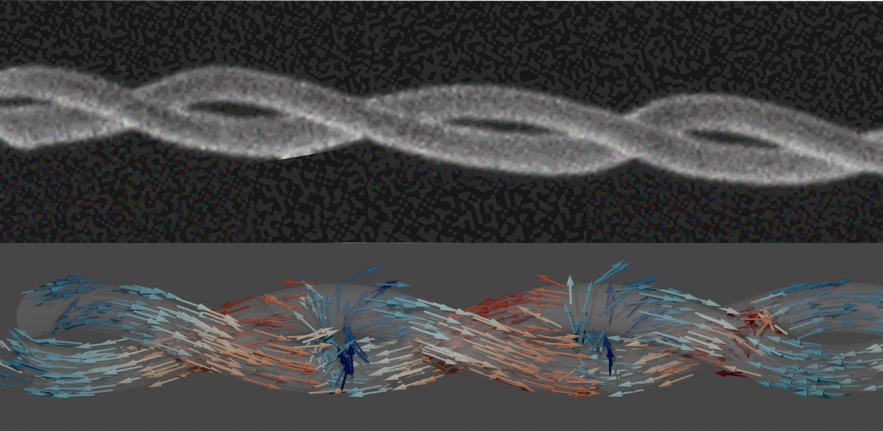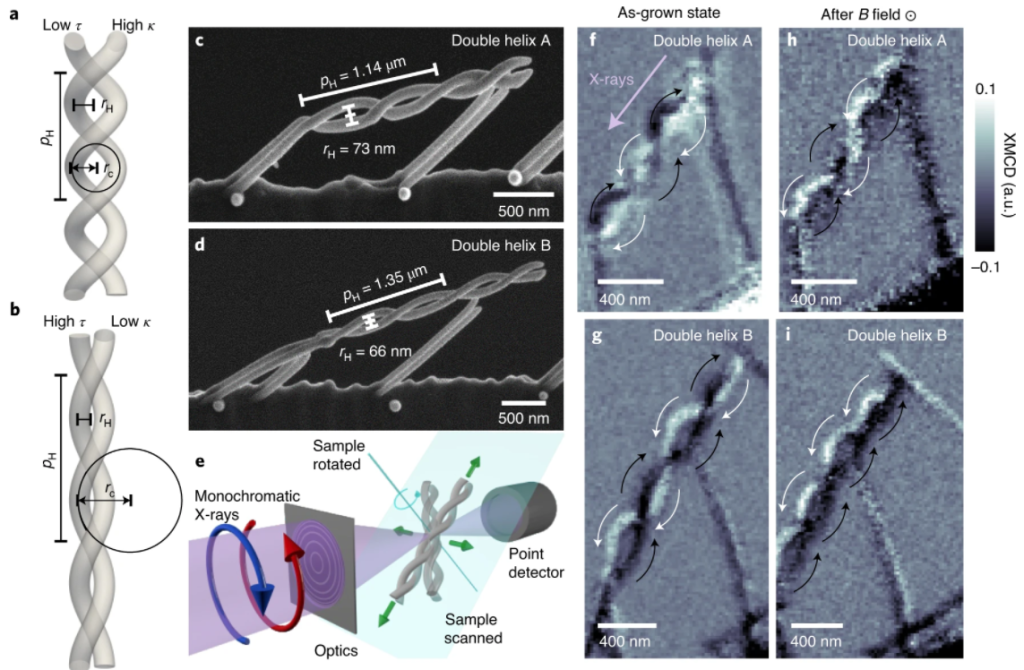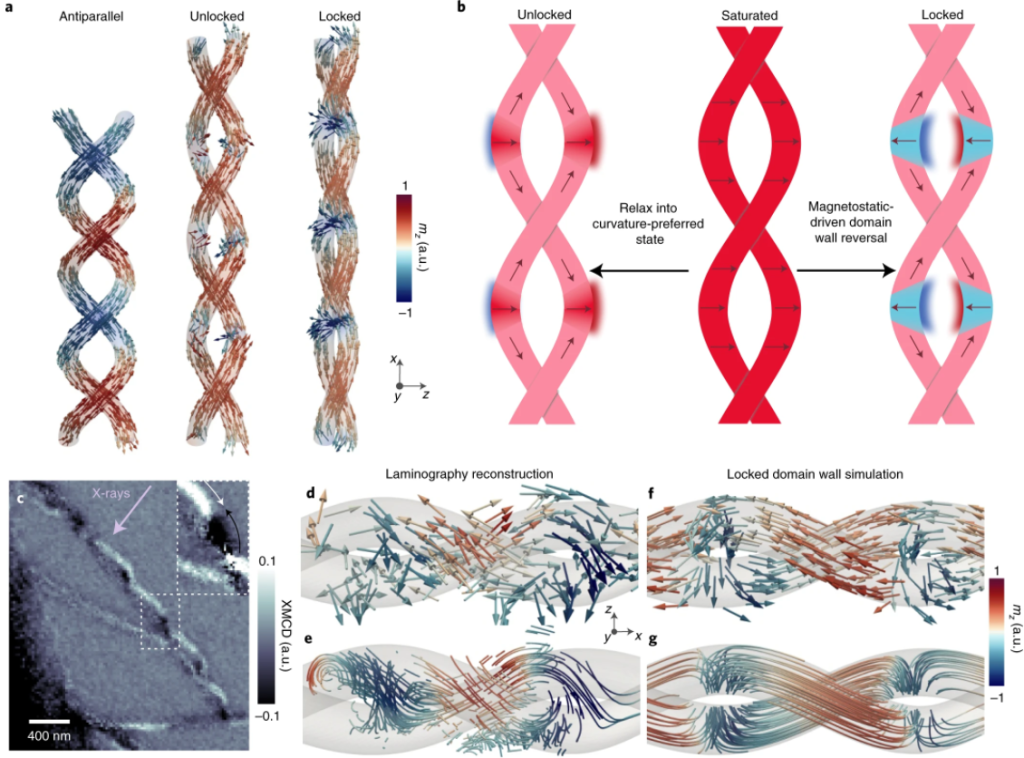China3D printingNet January 5th,
An international team of scientists led by the Cavendish Laboratory at the University of Cambridge has developed a new set of micro-nanomagnets using 3D printing technology.
These nanomagnets are made using a custom 3D printing process and have a double helix shape inspired by DNA. According to the research team, this unconventional structure helps the spirals to generate strong magnetic interactions in an unprecedented way. Specifically, by twisting each other, the 3D printed spirals create nano-scale topologies in the magnetic field they generate.
The team believes that it can use this phenomenon to closely control magnetism on the nanoscale, paving the way for “next generation” magnetic devices.
The study’s lead author Claire Donnelly explained: “This new ability to model magnetic fields on this length scale allows us to define the forces that will be applied to magnetic materials and understand how these magnetic fields are How far can we go by patterning. If we can control these magnetic forces on the nanoscale, we are closer to achieving the same degree of control as in two dimensions.”

3D printed spiral nanomagnet and its new magnetic field. The picture comes from Cambridge University.
Limitations of two-dimensional magnetic systems
Although you may not realize it, magnetic devices are an integral part of many different parts of our lives. Magnets are used for power generation applications, for data storage, and are essential for daily calculations.
However, traditional computing devices are quickly reaching their miniaturization limits because they are based on 2D magnetic systems. Therefore, in order to advance computing and data storage, the Cambridge team stated that there is growing interest in transitioning to 3D magnetic systems. Using 3D nanowire architecture, 3D magnetic systems can provide higher information density (more storage and less physical space) and overall improved performance.
Donnelly added: “A lot of work has been done around an immature technology called racetrack memory, which was originally proposed by Stuart Parkin. The idea is to store digital data in the magnetic domain walls of nanowires to produce Information storage equipment with high reliability, performance and capacity.”
So far, it has proved difficult to transition to this new field because of the need to understand the effect of zooming in to 3D on the magnetization and magnetic field of the system.
Therefore, Donnelly and other members of the team have been researching and developing new methods for visualizing 3D magnetic structures in the past few years. They also developed a 3D printing technology for magnetic materials-the technology used in this research.

SEM imaging of 3D printed nanomagnets. The picture comes from Cambridge University.
Scale the magnetization to the third dimension
After the nanomagnet was 3D printed, the Cambridge team performed 3D measurements on the PolLux beamline of the Swiss light source at the Paul Scherrer Institute. According to reports, it is the only beamline that provides soft X-ray tomography-an advanced X-ray imaging technology.
The researchers found that their 3D printed spiral magnets have a different magnetization texture from those normally seen in 2D systems. It is found that the wall pairs between the magnetic domains are coupled, resulting in deformation. By attracting each other, the walls can be seen to rotate and “lock in place”, creating strong bonds between the spirals of the printed magnet (much like the bonds in the DNA double helix).
Donnelly said: “Not only did we find that 3D structures lead to interesting topological nano-textures in magnetization, we are relatively accustomed to seeing such textures there, but we also discovered exciting new nano-scale field configurations in stray magnetic fields! “
After successfully 3D printing magnets with three-dimensional magnetization, scientists will now explore the production of more complex systems with three-dimensional magnetic fields. This work has shown promise in multiple fields, including particle capture, imaging technology, and smart materials.

3D printed the three-dimensional magnetic field of nanomagnets. The picture comes from Cambridge University.
3D printing of magnetic materials allows the creation of intelligent systems and a series of novel applications. Researchers at Xiamen University have previously developed 3D printed radio frequency (RF) probes that can perform conventional and unconventional magnetic resonance (MR) experiments. MR technology is widely used in scientific research, geological survey and clinical diagnosis through MRI scanning.
Elsewhere, researchers at the University of Grenoble have previously developed a method for 3D printing microstructures with a deformable magnetic field. The method involves adding magnetic beads to standard two-photon polymerization (2PP) 3D printed objects. By adjusting the characteristics of the material and the orientation of the beads, scientists can create complex nano-tweezers that can be manipulated using only an external magnetic field.
China3D printingNet compile article!
(Editor in charge: admin)


0 Comments for “Researchers use 3D printing technology to develop new spiral nanomagnets”